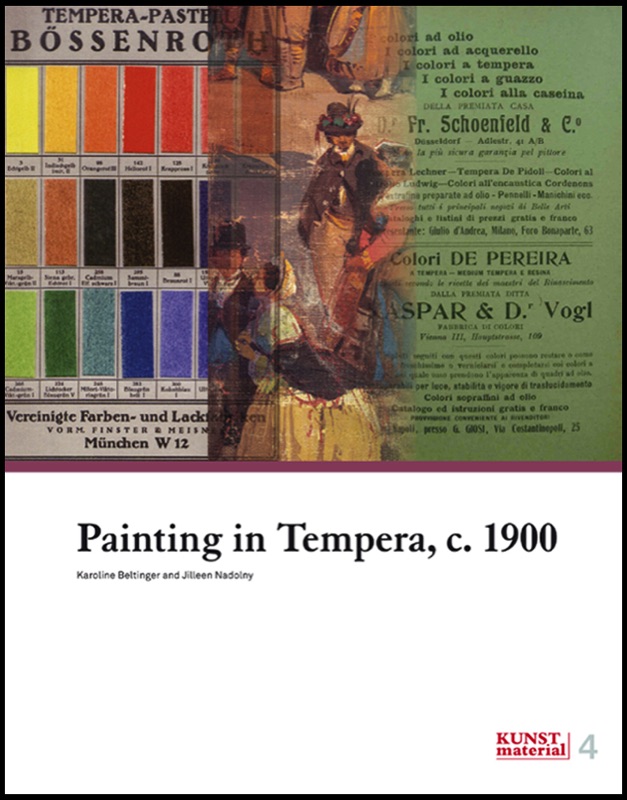This co- publication of Archetype Publications Ltd with Schweizerisches Institut für Kunstwissenschaft (SIK-ISEA) is a collection of essays by an international group of scholars which provides access to an important chapter of technical art history: the rise in the popularity of temperas as an alternative to oil paints in Europe in the 19th and early 20th century.
The term 'tempera' designated media that were generally water-soluble and which could include components as wide ranging as egg, gums, glues, soaps, waxes and resins.
Revered as the technique of the ancients, it possessed both historical cachet and aesthetic and practical advantages, such as luminosity of colour, short drying times, and resistance to yellowing and cracking. Although interest in tempera paints was not limited to any one country, their industrial manufacture was concentrated in the region of present-day Germany, while in Italy a distinct tradition of artisanal production evolved.
Developments in these two regions are surveyed, lending insight into the academic polemics surrounding temperas, the varied range of products on the market, their composition and their use by specific artists for easel paintings, murals and decorative schemes alike. Based upon source material, conservation research and technical studies of paintings as well as scientific approaches to the analysis of historical temperas, a vivid depiction of this complex artistic period emerges.
Preface and Acknowledgements
Part 1: Introduction
Tempera: on the history of a technical term
Eva Reinkowski
Part 2: Propagation of tempera
The use of tempera by painters and restorers in Italy and Latin Europe, c. 1800–1870
Giuseppina Perusini and Teresa Perusini
From wall to canvas: the role of tempera in the development of mural and easel painting in Germany in the 19th century
Eva Reinkowski
Ernst Berger and his role in the Munich tempera controversy
Kathrin Kinseher
Evidence for wax tempera binding media in Italian technical literature of the first half of the 20th century
Paola Travaglio
Part 3: Types of tempera
The Pereira tempera system
Karoline Beltinger
Tempera paints in Italy in the first half of the 20th century, with a special focus on ‘tempera grassa’ by Maimeri
Sandro Baroni, Simona Rinaldi and Maite Rossi
Photographic layer and paint layer: approaches to tempera beyond tradition
Albrecht Pohlmann
A tabulated listing of industrially produced tempera paints, c. 1900
Albrecht Pohlmann, Kathrin Kinseher, Wibke Neugebauer, Eva Reinkowski and Simona Rinaldi
Part 4: Tempera application techniques
Layered and alla prima: some examples of tempera painting techniques, 1850–1914
Wibke Neugebauer
Part 5: Tempera analysis
Analysis of complex tempera binding media combining chromatographic techniques, fluorescent staining for proteins and FTIR-FPA imaging
Patrick Dietemann, Wibke Neugebauer, Ursula Baumer, Irene Fiedler, Cedric Beil, Andrea Obermeier, Stephan Schäfer and Stefan Zumbühl
The role of reconstructions in the identification of a wax/resin/gum tempera binder developed by Hermann Urban in 1901 and used by Cuno Amiet in 1902
Ester S.B. Ferreira, Karin Wyss, Violaine de Villemereuil, Karoline Beltinger, Federica Marone, Nadim C. Scherrer and Stefan Zumbühl
Bibliography
Photo credits
Index of persons, companies, and bodies
Index of products and materials
Authors’ biographies
...beautifully produced and generously illustrated book...the meticulous research presented gives vivid and often unexpected insights into the tempera phenomenon and the ways in which it can be studied and understood.
JAIC - Aug 2017
